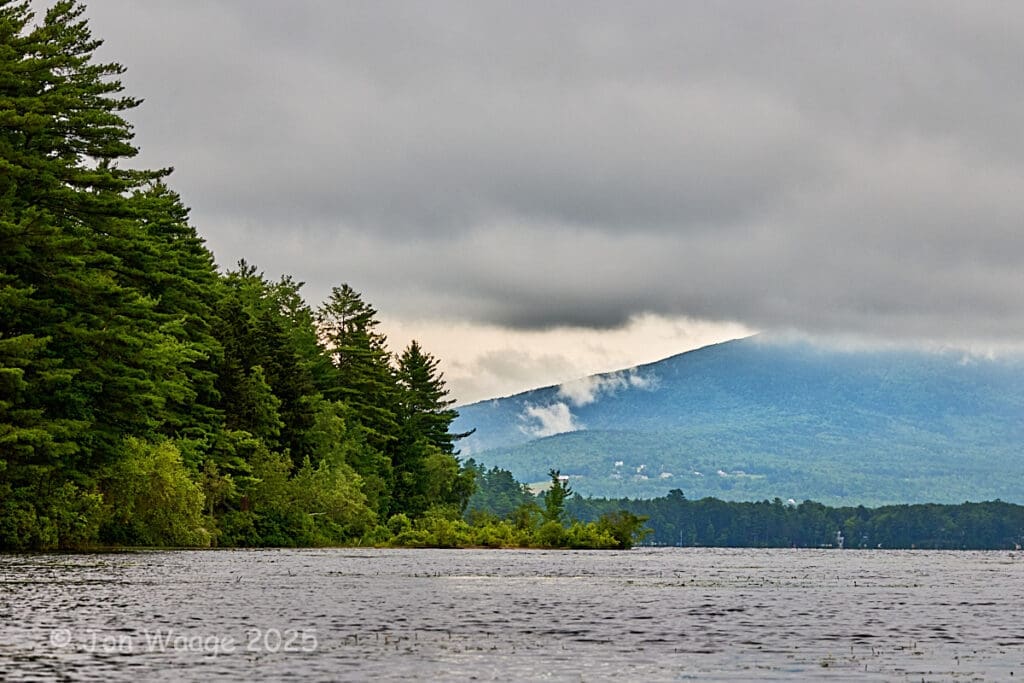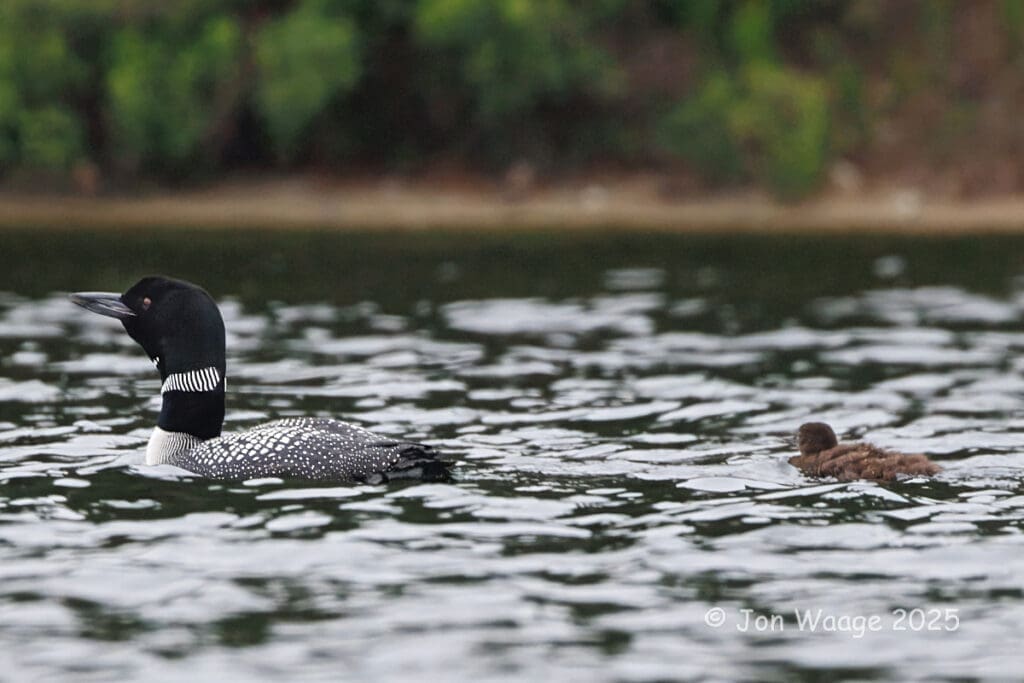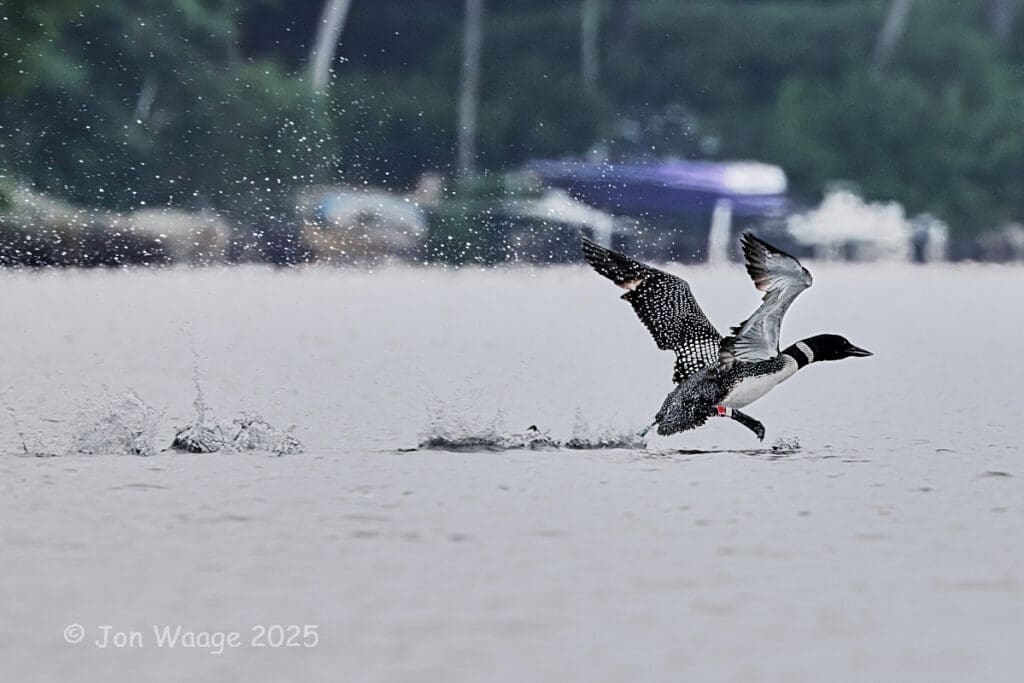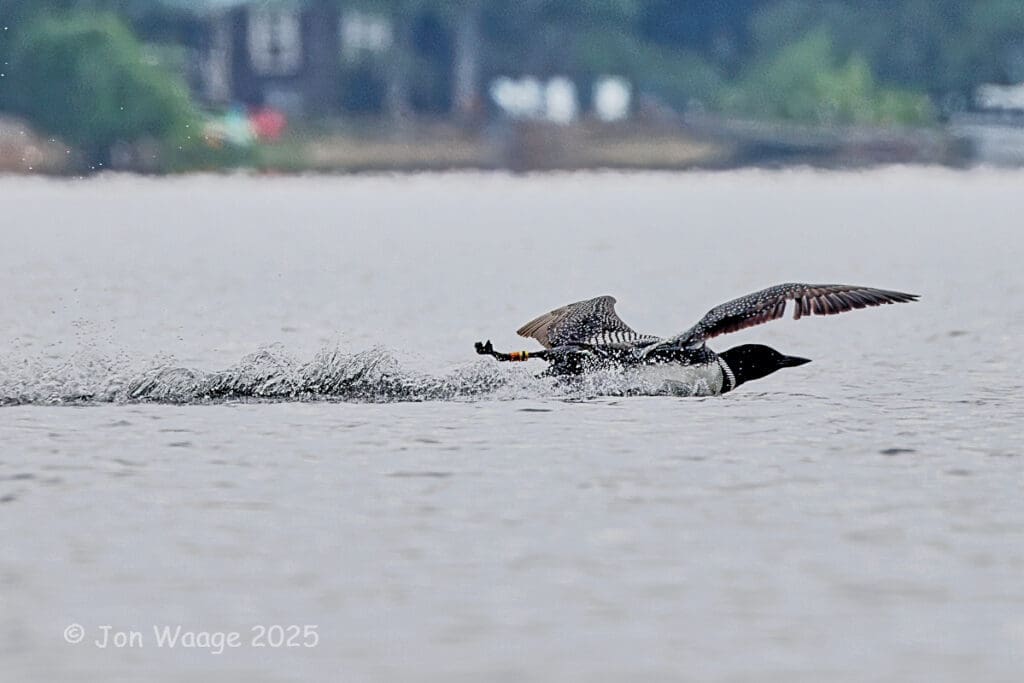Loon Update
2025, No. 08 — July 15th

|
Loon Update
|
Things are settling down a bit, and Papa is spending more time with Piper (below). You’ll notice that Papa was very alert when this photo was taken.

There are still frequent interactions with other loons on the lake. Saturday, both parents were with Piper when suddenly they started screaming and moving out on the lake. They may have seen an approaching loon or two. One after the other, they ran on the water surface for about 100 meters, calling loudly. Below, Mama is running.

Both soon glided to a stop a third of the way down the lake (Papa below), and returned to tend Piper.

This morning, the family was back together for a while. Piper was getting lots to eat from both parents. Despite recent battles, both parents seem unharmed.

Even with all the time alone while her parents are dealing with other loons, Piper has grown a lot in the past week.

We want to thank those around the lake who have helped us keep track of Piper and her parents. A big hug for all from her father.

|
Late Arrivals
|
The unsettled weather so far this summer has caused some species to appear later than usual. Dragonflies and damselflies have been slowly emerging from their larval stage since late May.
Now the early summer species are appearing a week or two late. Two favorites on our pond recently showed up.

Male Slaty Skimmer (Libellula incesta)

Male Twelve-spotted Skimmer (Libellula pulchella)
Because our pond lacks fish, we have a rather special damselfly that breeds there. Azure Bluets (Enallagma aspersum) spend a lot of time in the vegetation around the pond. Most damselflies are “foliage gleaners” and pick insects off of plants rather that catch them in the air.

Our meadow is full of native species of plants and insects. These days it is visited by the young of local birds looking for food. Youngsters, like the Robin below, are a joy to watch as they follow adults trying to figure out how to find and catch things to eat.

Our favorite summer avian visitors are local turkey hens with their new broods. They are late this year, but our “lawn” and meadow with lots of mown paths are safe and easy to forage in.


Like chickens, the newly hatched chicks follow their mother around as she uncovers or pecks at various food items for them to take. Soon they are off on their own, hunting grasshoppers and other invertebrates.

With the mother nearby, they will forage for a while, and when she calls, they all run to her for a rest under her dome of feathers (below).

Bye for now … Jen and Jon

Text and Photographs by Jen Esten and Jon Waage
